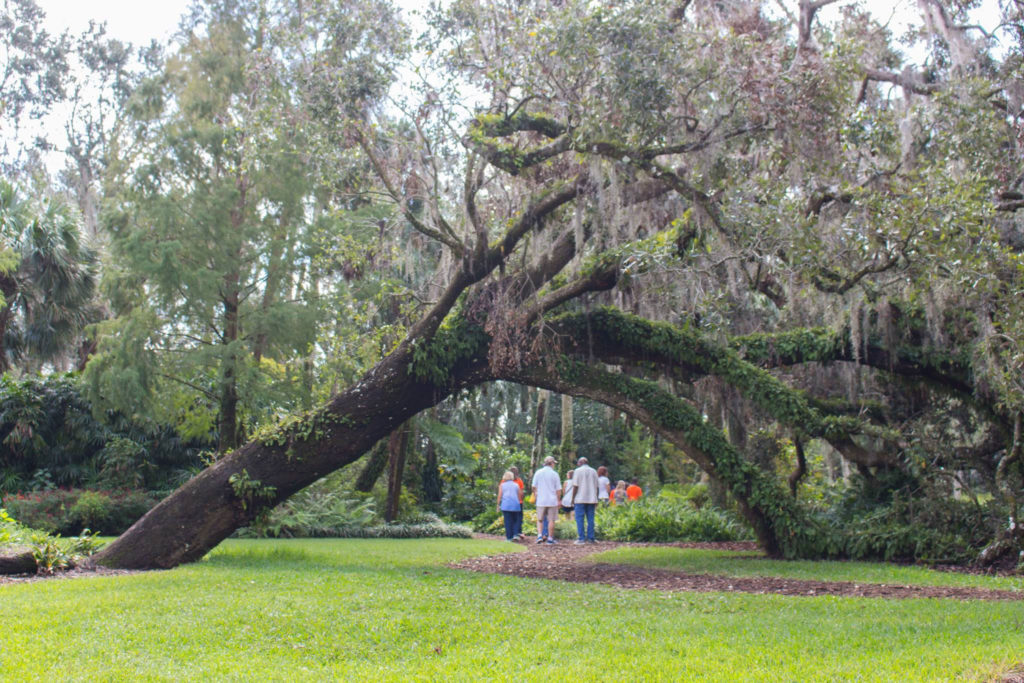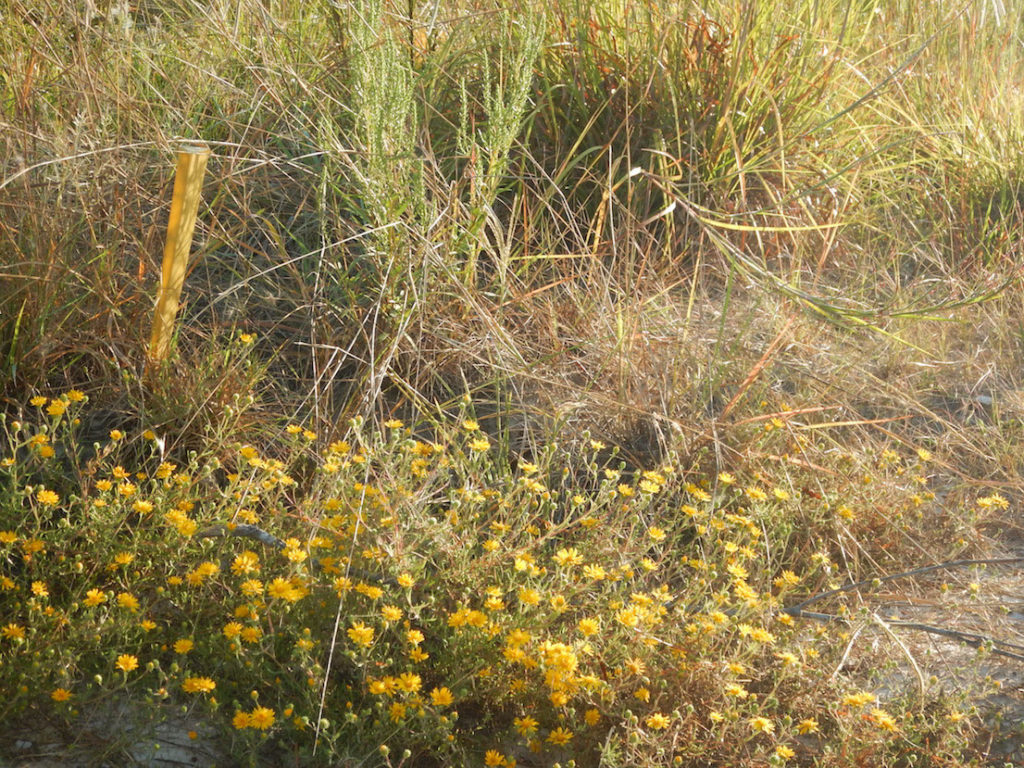Hurricane Recovery Updates
“In early September, the high winds and storm surge from Hurricane Irma devastated The Kampong, the National Tropical Botanical Garden’s property in south Miami. I was able to go there a week after the storm and what I saw was heartbreaking. The Kampong was a war zone, and many of our iconic trees, the Baobab, Cannon Ball Tree, Yellow Royal Poinciana, Mammee Apple, and Wedding Tree had all been dealt a devastating, in fact, nearly fatal blow by the fierce winds that ripped through our beloved garden. The storm surge and wind-driven waves ripped away the soil and plants from the point, tossing up coral boulders and rubble in a swath of destruction that made it hard to imagine the storm’s raw power.
“Once we had been able to survey the extent of the damage the numbers were astounding. 260 trees were impacted by Irma’s winds. Of these, 24 were so damaged there was no hope of recovery. Another 68 were uprooted and lying with their roots ripped out of the ground. Of the trees that were not toppled, 146 had significant canopy damage and 22 had moderate canopy damage.
“Our staff wasted no time, and under the leadership of Director Craig Morrel they were able to save all of the uprooted trees by pruning their tops and watering their exposed roots until they could be set upright and staked. Craig was even able to lift the 25 ton 100-year old Baobab back into place with the help of a 100-ton crane.
“As of early December, the recovery is quite extraordinary and all of the damaged trees are flushing out with new growth and show strong signs that they will recover completely. We estimate that it will take 4-5 years of regular arborist work to restore a sound architectural canopy to all of the surviving trees.
“We are very appreciative of the help we have received from other Gardens – especially the Eden Project in the UK which, thanks to Dr. Mike Maunder, flew an arborist over to assist with the recovery. I also can’t say enough good things about Craig and his team at The Kampong. They rose to the challenge and their passion and hard work has saved a majority of this priceless collection of historic trees.” (Chipper Wichman)
BOK TOWER GARDENS
“The Gardens are slowly returning to normal. Thanks to the power of Hurricane Irma, Bok Tower Gardens has a new garden feature. The Horticultural team was able to save one of the downed trees, and visitors are enjoying a wonderful arch to walk under as they stroll through the historic Olmsted design. Repairs on the greenhouse have begun and should be completed by the new year.” (Erica Smith)

MONTGOMERY BOTANICAL CENTER
“MBC suffered significant damage to its scientific collections from Hurricane Irma in early September 2017, losing upwards of 180 trees including 148 palms to date. Damage was even more widespread, with over 430 plants on the property suffering damage from severe winds, uprooting, canopy loss, broken branches, and smothering from fallen trees. Many trees were downed, broken, or uprooted, including beloved Champion Trees, like Canaga odorata and Kigelia pinnata, which had weathered past hurricanes and storms, but did not withstand nature’s wrath this time around. Work is ongoing to save upwards of 218 palms and 210 dicots through lifting, staking, trimming, and clearing of debris. We have successfully raised several palms that were blown down during the hurricane, and staked many more. Thanks to emergency funding from the National Science Foundation, some larger specimens, such as Corypha taliera, a species extinct in the wild, have been lifted back into position by crane. The same grant has also provided us with funds to hire two part-time Research Assistants from a local university, who are helping our palm curators to advance recovery of palms on the property.
“Overall, our cycad collection survived the hurricane well, as most are naturally sheltered from the worst of the winds due to their low stature. Nonetheless, fallen branches and toppled trees damaged some specimens, and the loss of valuable shade trees has temporarily exposed some of the more delicate shade-loving cycad species to full sun. While roads throughout the property are clear, trimming of broken trees and limbs is moving along, and most of the debris has been removed from atop the collections, we still have plenty of work ahead. Our team is up to the task and progress is noted daily as we continue to rescue, nurture, and maintain MBC’s important scientific collections.” (Joanna M. Tucker Lima)

MERCER BOTANIC GARDENS
“Mercer Botanic Gardens remains partially closed. The West Arboretum, comprised of approximately three miles of woodland trails and two wetlands boardwalks, along with a picnic and playground area, reopened to the public in late October. The East Side Gardens, including the Visitor Center and more than 20 acres of gardens, is still undergoing cleanup and rebuilding. While full reconstruction of the interior of the Visitor Center will not be complete for many months, the goal is to reopen a front section of the gardens to the public in late winter or early spring 2018. Reconstruction of the ground floor interior of our research building that houses laboratories, an herbarium, and library should be completed in January 2018.” (Darrin Durling)